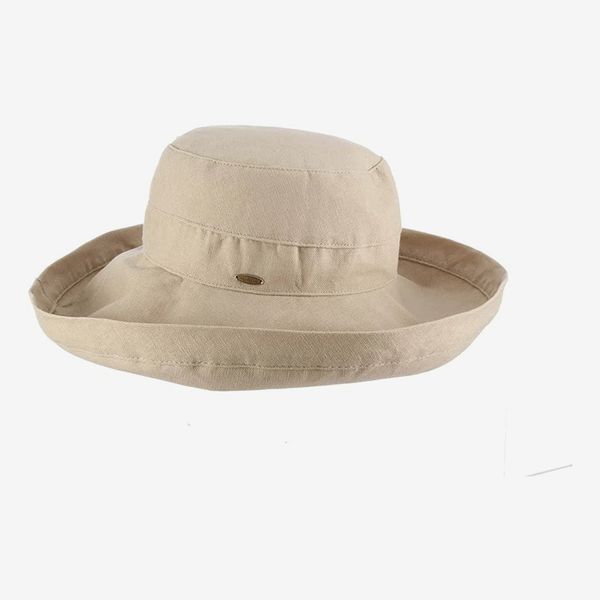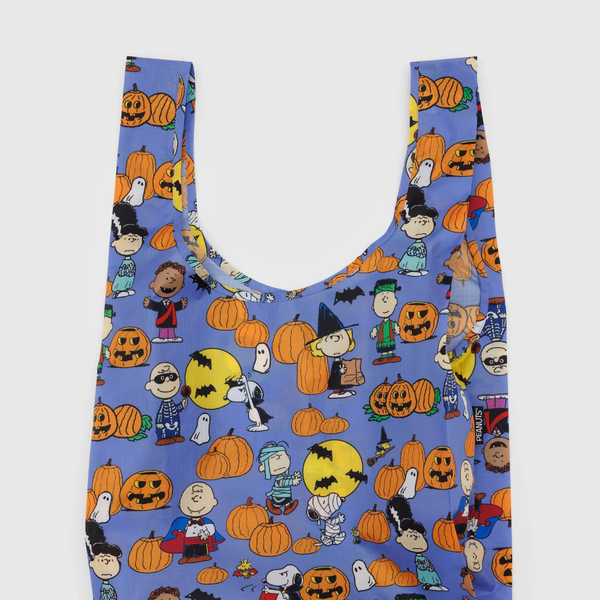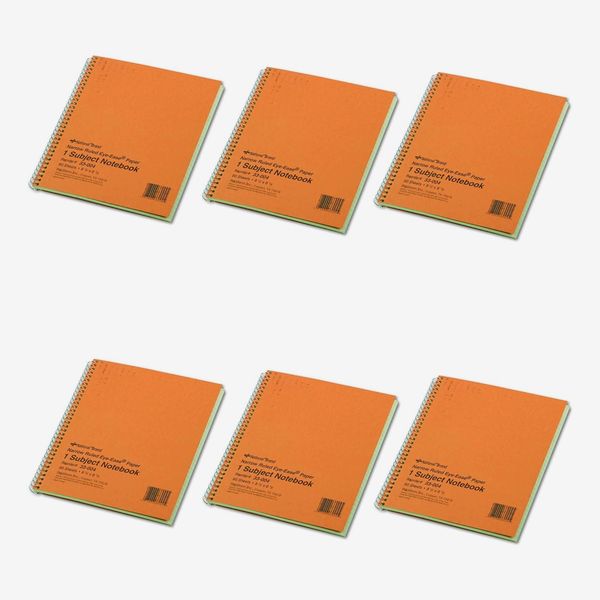
In this article
Whether you’re hosting a backyard barbecue, spending the day at the beach, or heading out on a camping trip, a good cooler is an essential piece of summer gear. And while there are some impressive high-end cooler options out there (I’m looking at you, Yeti), it’s definitely possible to keep drinks and snacks cold for multiple hours without investing hundreds of dollars. I’ve consulted caterers, professional picnic planners, and outdoor-gear enthusiasts about their favorite coolers for all sorts of purposes, from multiday trips to casual afternoons in the sun. I’ve also tested out a few of these coolers myself, alongside fellow Strategist staffers who prefer to keep their cans ice-cold on hot days. While you’re here, we’ve also done the research to find the best ice-cube trays, insulated water bottles, and even a custom thermos for keeping ice cream cold outdoors.
What we’re looking for
Insulation
The first thing to understand about coolers is that their name is deceptive. Coolers don’t cool so much as maintain already cold temperatures over variable periods, which is why you’ll ideally want to fill them with ice or reusable ice packs, plus food that’s already cold or frozen. Coolers with a strong seal and advanced insulation will keep that ice frozen for longer — sometimes even days at a time.
Dr. Rebecca Webb, an instructor of energy systems engineering at the University of Southern Oregon, explains that coolers become heavier as insulation gets thicker, while also losing storage capacity: “So it’s a bit of a game for cooler manufacturers — they’re striving for something that’s light and has plenty of volume but also keeps the food cold.” High-end brands like Yeti have nailed this balance well: “They’ve used a more expensive insulation and have a thinner wall, but it has the same effect as having really thick walls.”
Common sense will enhance the insulating qualities of any cooler, even a Yeti. “Don’t open it a lot,” says Webb. “And if you leave the cooler in the sun, it’s going to absorb more heat than in the shade.” To boost performance, fill your cooler with more ice than food, and double-insulate where you can by wrapping items in individual insulated bags, suggests Lauren Kimmons, the owner of Pop Up Picnic Co. “And use ice packs in food containers to keep things extra cold.”
Capacity
When purchasing a cooler, it’s also important to consider “what exactly you will be keeping cool, for how long, and for how many people,” advises Annie Seddington, the president and coordinator of PikNYC Luxury Events. A large hard-sided cooler isn’t always appropriate or necessary — for many city dwellers, something that can be toted around or worn as a backpack will be more useful. “For small spaces, long distances, and a limited amount of food and drinks, I recommend a soft cooler you can carry,” says Kimmons. When transporting food and drinks for less than two hours, you can get away with a simple and affordable thermal bag with a couple of ice packs, adds Seddington. If you need to keep a large amount of food (especially meat, cheese, or eggs) at a safe temperature, though, a hard cooler becomes preferable.
Extra features
Their storage and cooling powers aside, great coolers should be built practically and with outdoor activities in mind. So I looked for coolers with well-designed drainage, leakproof construction, solid handles, and the ability to act as makeshift seating, and have taken note of such features to help you decide which to buy.
Best overall cooler
Insulation: All-day | Capacity: 13 cans | Extra features: Flip-top, padded carry handle, leak proof construction
I’d love to be able to tell you that Yeti’s famously expensive coolers are overrated and that you’re paying a premium for what’s essentially just a status-y outdoor-brand logo. Yet multiple catering and food experts I spoke with said that investing in Yeti’s products was worth it for their business because they are more durable and efficient than the competitors. Cook Dan Pelosi says he is “obsessed” with the brand’s city-friendly over-the-shoulder Hopper soft cooler, which he takes to the beach and on bike rides. Another fan is Julie Lindenman, owner of an eponymous event-planning company, who says that it easily fits up to “a couple bottles of wine, lunch for two people, two water bottles, and a few other drinks.” The Hopper is also a New York staffer favorite of many years — my fellow Strategist writer Dominique Pariso loves that it’s “UV-resistant, mildew-resistant, leakproof, and practically disasterproof.” Former Strategist writer Lauren Schwartzberg agrees that it’s basically “indestructible.” Best of all, the Hopper keeps things damn cold all day long, while being unusually convenient to carry around.
Best less-expensive cooler
Insulation: All-day | Capacity: 16 cans | Extra features: Flip top, insulated front pocket, lightweight
There are plenty of worthy Yeti cooler alternatives out there, like this thermal bag that Pariso and her family rely on as a more lightweight backup to their beloved Hopper. “While not quite as heavy-duty, it’s easy to carry and will reliably keep your water cold for an entire day spent baking in the August sun,” she says. The Parisos are far from its only fans: Over 3,000 five-star Amazon reviewers rave about the Titan’s insulating powers.
Best beer cooler
Insulation: All day | Capacity: 12 cans | Extra features: Beer can-specific design, sling strap
My main priority with coolers is their ability to keep beers frosty for as long as possible. I’m not alone, which is why some brands have designed coolers especially for cans. This one, recommended as an excellent gift for beer lovers by the Other Half Brewing Company’s Matt Monahan, perfectly fits 12 of them. It also has a comfortable padded strap and leakproof construction that’s reminiscent of the Yeti Hopper above.
Best less-expensive beer cooler
Insulation: All day | Capacity: 12 cans | Extra features: Padded strap, external pocket, collapses for storage
Here’s a much more affordable 12-can cooler from REI. Though two packs of beer won’t fit so snugly as in the Pelican sling, that extra space makes this bag more practical for storing snacks, too. It’s a favorite of Lindenman, who says she especially likes it as a more insulated alternative to the traditional wicker picnic basket.
Best hard cooler
Insulation: Multiple day | Capacity: 39 cans (without ice) | Extra features: Drainage spigot, bear-resistant, freezer-style seal
For hard-sided coolers, Yeti once again comes highly recommended. Webb says the brand’s pressure-injected polyurethane insulation is its main draw, because this is simply a much more advanced insulator than you’ll find in cheaper coolers. Indeed, Pelosi says he’s tried other brand but continues to be blown away by how Yeti’s seamless, one-piece rotomolded construction keeps things that much icier. “As a cook and entertainer, you keep a Yeti in your garage, so if you’re having a big party you can use it as your refrigerator for the weekend,” he says. “They’re really great for keeping food cold if you don’t have food in your refrigerator.” Yeti’s hard coolers are also strong enough that they can be used for extra seating at dinner parties and outdoor gatherings if needed, with Pelosi pointing out that they’re actually perfect table-height. His prized collection of Yetis includes this Tundra 35, which is perfectly sized for one person or a couple. LCD Soundsystem’s James Murphy, the owner of the restaurant and wine bar Four Horsemen in Williamsburg, is also a fan. “Nothing ever gets warm in there,” he says. “It’s bonkers.”
Best less-expensive hard cooler
Insulation: Multiple day | Capacity: 40 cans (without ice) | Extra features: Two drainage spigots, bottle opener, lightweight (13lbs)
As you can see simply by comparing the product photos, RTIC’s coolers are similar enough to Yeti’s that there have been, uh, lawsuits. While this hard-sided cooler isn’t exactly cheap, it’s about $100 more affordable than the very obvious competitor above. It even offers a few extra design features that Yeti doesn’t, like the fun addition of a bottle opener and two drainage holes as opposed to one. RTIC’s cooler is also only three quarts lower in capacity, yet eight pounds lighter, than a Yeti Tundra 35. But do note that this might indicate a difference in durability: Yeti coolers have a five-year warranty, compared to one year on RTICs.
Best budget hard cooler
Insulation: Multiple day | Capacity: 84 cans (without ice) | Extra features: Cupholders, wheels, telescope handle
Kimmons is a professional picnic planner, and she’s no-nonsense about why her business uses Coleman coolers: “That Yeti price tag.” Fair enough: There’s nothing wrong with a Coleman, especially if you take extra care in packing it. I have always used Coleman coolers myself, and the brand’s insulated-cooler camping chair is currently ranked as our Best in Class.
Best wheeled cooler
Insulation: Multiple day | Capacity: 48 cans (without ice) | Extra features: Fun colorways, removable drink tank, puncture-resistant wheels
If you’re hosting a lot of events — whether they’re family gatherings or something more commercial — then it’s time to get serious and add wheels to your cooler, says Carla Ruben, president of Creative Edge Parties. She “absolutely loves” this big Brumate, especially for its huge capacity and clever compartmental design with an in-built cold-drink tank. “It stays cold all day, the wheels are amazing, and it holds a lot,” she says. “And it’s a little more affordable than Yeti.” As well as food (“You can put a whole meal for eight to ten people in there”), she and her team use this cooler and its handy spigot to keep batches of ice-cold cocktails on tap. Her catering business opened a Miami branch during the pandemic, and “coolers are always a big conversation down here.” This one has proved perfect for warmer climes, and has proven extremely durable: “The handle is really solid and doesn’t break or bend — and we’re throwing them on trucks all the time.”
Best car-camping cooler
Insulation: Multiple day | Capacity: 64 cans (without ice) | Extra features: Stackable design, pastel colorways, drainage spigot
Outdoorswoman Brittany Alexandria Parks purchased this stackable, boxy cooler for primitive car camping, because it’s easier to pack into a trunk than coolers with rounded edges. It has similar seamless construction to the Yeti and RTIC hard coolers above, but is a little more compact, being designed specifically for cars. The colors are appealing, as is this thing’s insulating power: “It’s perfect for long weekends in campsites with no facilities — ice lasts two to four days with no issue, if you’re responsible and don’t leave it in the sun or a hot car.” While she hasn’t had to take advantage of it, Parks also likes the cooler’s lifetime warranty, which is an even better guarantee than Yeti offers. “From what I’ve read, they’ll replace it with no questions asked,” she says. For a cooler that costs in the hundreds of dollars, “that’s the warranty I want.”
Best powered cooler
Insulation: Powered | Capacity: 50 cans (no ice needed) | Extra features: App temperature control, removable wire baskets, color screen
On long-term camping trips, draining and repacking your cooler every few days becomes a huge inconvenience. When cook Ali Slagle and her boyfriend embarked on a van-life odyssey, this powered cooler was their biggest splurge, and they’ve found that it greatly improves on-the-road morale. (On a previous trip without it, “the frequent fast food and snacking made me very grumpy and my body pined for green vegetables,” she says.) Essentially a much more power-friendly mini-fridge with temperature variation that’s easily controlled via app, it has been a more than worthwhile investment: “I like it because it’s compact, doubles as a dining chair, and fits everything we need for four to five days: vegetables, apples, cheese, jam, nut butter, cooked grains, cured meats, olives, seltzer, and beer.” You’ll need a power source or hefty portable battery to run the cooler, which even has a freezing function.
Best thermal bags and ice packs
While it’s worth investing in a Yeti cooler if you can, there’s pretty much no need to throw away money on expensive ice packs from big-name brands. Seddington likes lining her coolers with these affordable and reusable ones. She also recommends investing in some of these simple black insulated grocery bags, which can be used on their own or to wrap food before placing it within a larger cooler.
Our experts
• Lauren Kimmons, owner, Pop Up Picnic Co.
• Julie Lindenman, owner, Julie Lindenman Events
• Matt Monahan, chief operating officer, Other Half Brewing Company
• James Murphy, owner, Four Horsemen
• Dominique Pariso, writer, the Strategist
• Brittany Alexandria Parks, outdoorswoman
• Dan Pelosi, cookbook author
• Carla Ruben, president, Creative Edge Parties
• Lauren Schwartzberg, former writer, the Strategist
• Annie Seddington, president and coordinator, PikNYC Luxury Events
• Ali Slagle, cookbook author and van-lifer
• Dr. Rebecca Webb, instructor, energy systems engineering, the University of Southern Oregon
The Strategist is designed to surface the most useful, expert recommendations for things to buy across the vast e-commerce landscape. Some of our latest conquests include the best women’s jeans, rolling luggage, pillows for side sleepers, ultra-flattering pants, and bath towels. We update links when possible, but note that deals can expire and all prices are subject to change.
Every editorial product is independently selected. If you buy something through our links, New York may earn an affiliate commission.

















